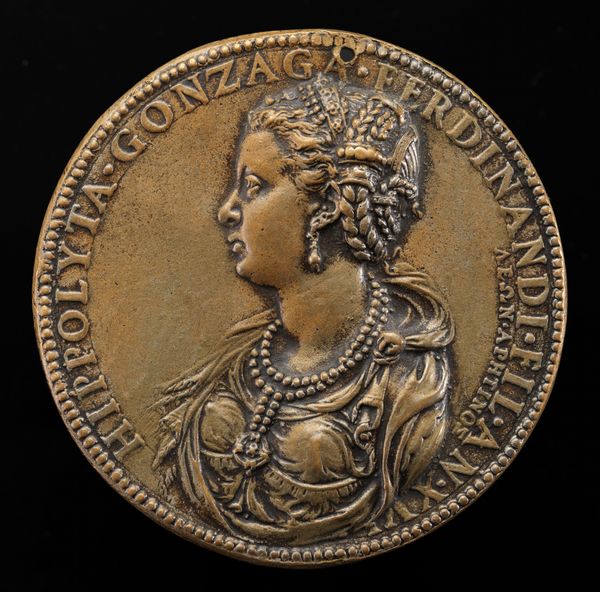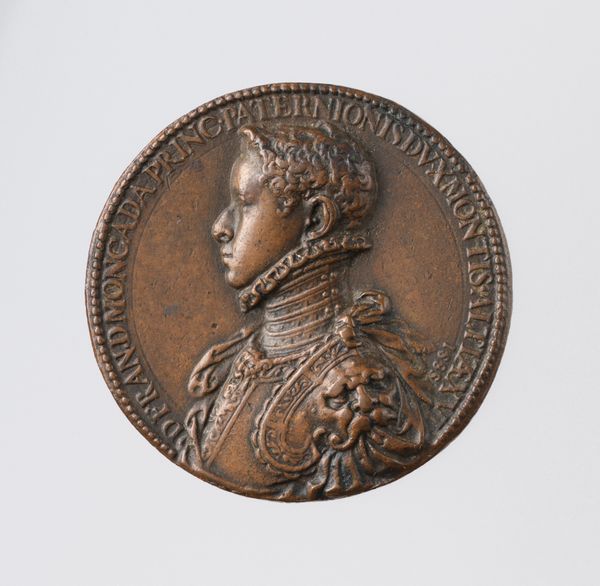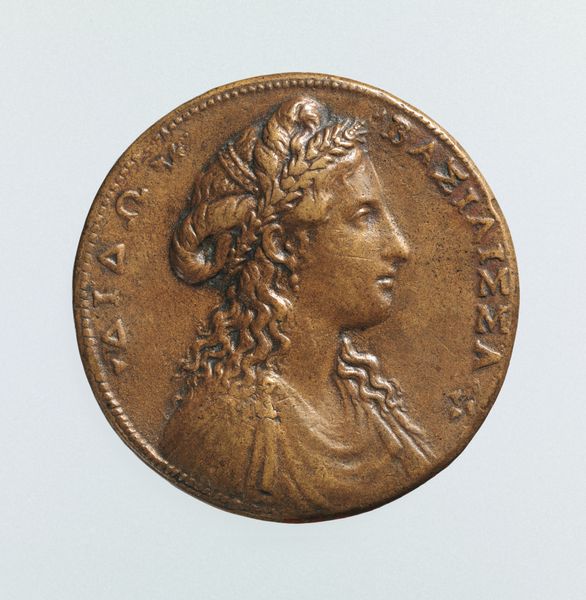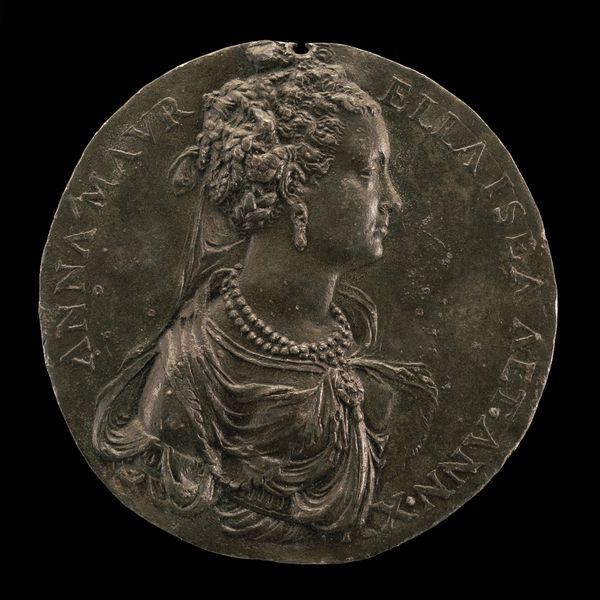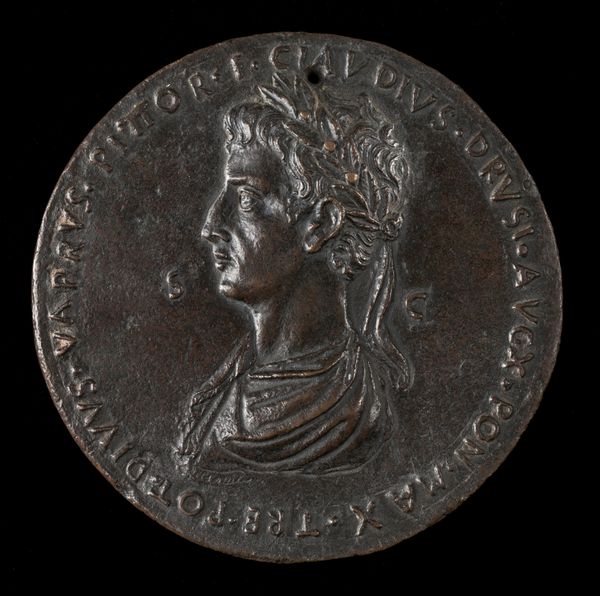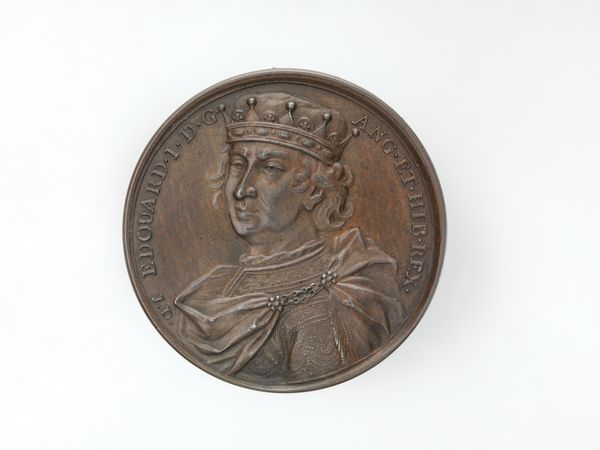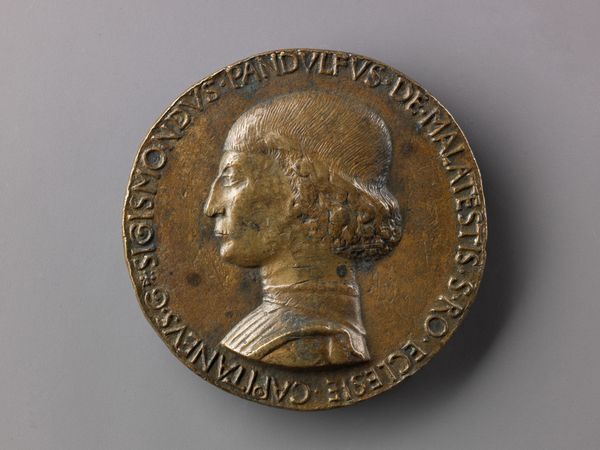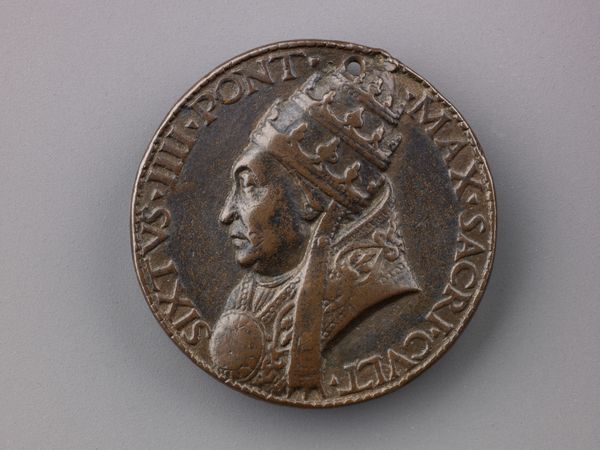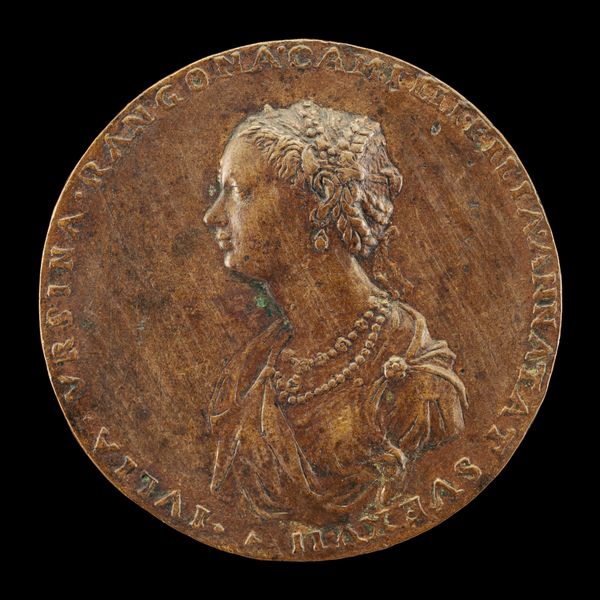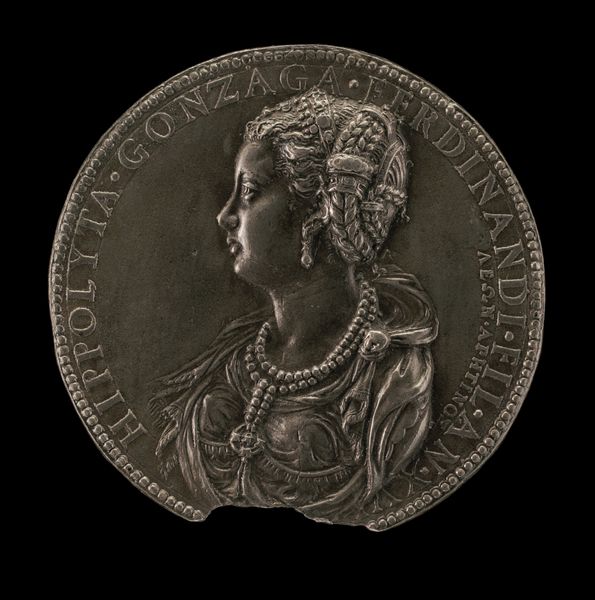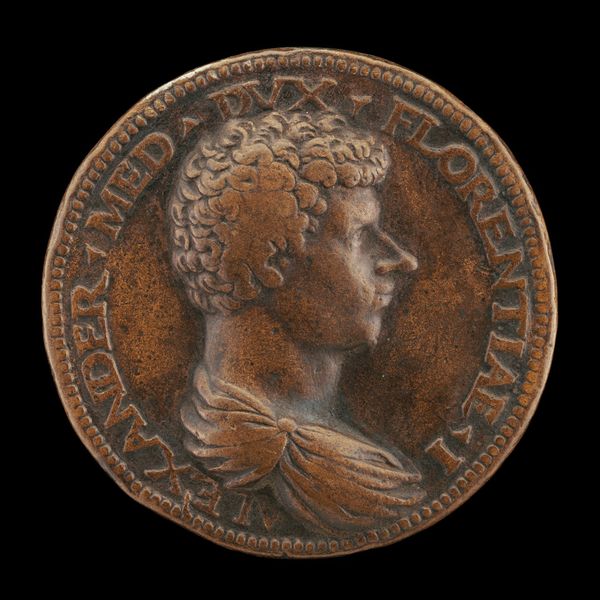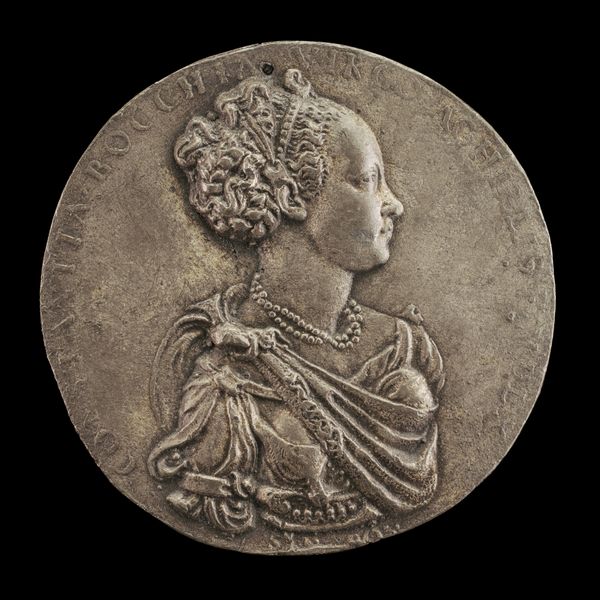
metal, relief, bronze, sculpture
#
portrait
#
medal
#
metal
#
stone
#
sculpture
#
relief
#
bronze
#
sculptural image
#
11_renaissance
#
sculpture
#
profile
Dimensions: Diam. 6.6 cm, wt. 75.96 g.
Copyright: Public Domain
Editor: This bronze relief, created by Leone Leoni in 1551, is a medal depicting Ippolita Gonzaga. It's striking how her profile is so crisply rendered, almost like a cameo. What can you tell us about this portrait and what it might have signified? Curator: Well, it's a fascinating piece because it serves not just as a record of Ippolita's appearance but also as a potent symbol of her status and lineage. Do you notice how the inscription encircles her image, almost like a halo? It binds her identity to Ferdinand. Medals like these were Renaissance tools used to propagate power and construct individual identities, and, even more so, connect a name to another of perceived greater import. Ippolita Gonzaga, niece of a Holy Roman Emperor and connected by marriage to potent families, becomes part of an elite network, and her image helps cement this memory. Editor: So, it’s about building a legacy, or visually reinforcing relationships, more than simply capturing likeness? Curator: Exactly! Consider the permanence of bronze, chosen intentionally. Beyond its value, what does bronze suggest in our collective cultural memory? Think about antiquity. It is speaking to aspirations of timelessness and endurance, which, for aristocratic families, was crucial for maintaining power across generations. The symbols—her garments, the details of her hairstyle—these contribute to a cultivated image of virtue, intelligence, and nobility, all meticulously planned. The artist chose specific symbology associated with power in imagery and history. What do you think they achieved? Editor: It feels like more than just a portrait; it is almost like a family brand, linking her image to an idealized vision that extends beyond a single person. That’s intriguing – something that continues to influence imagery today, wouldn’t you agree? Curator: Precisely. Cultural memory relies on shared understanding of symbols. Without such understanding, there can be no collective cultural meaning. That understanding informs us still.
Comments
No comments
Be the first to comment and join the conversation on the ultimate creative platform.
